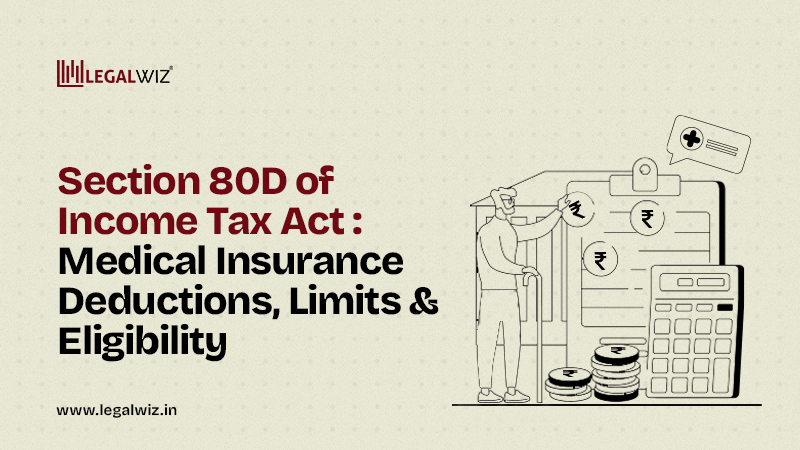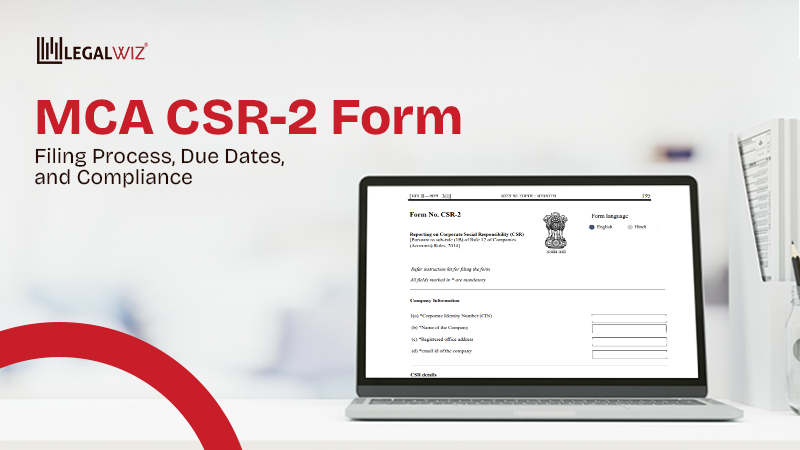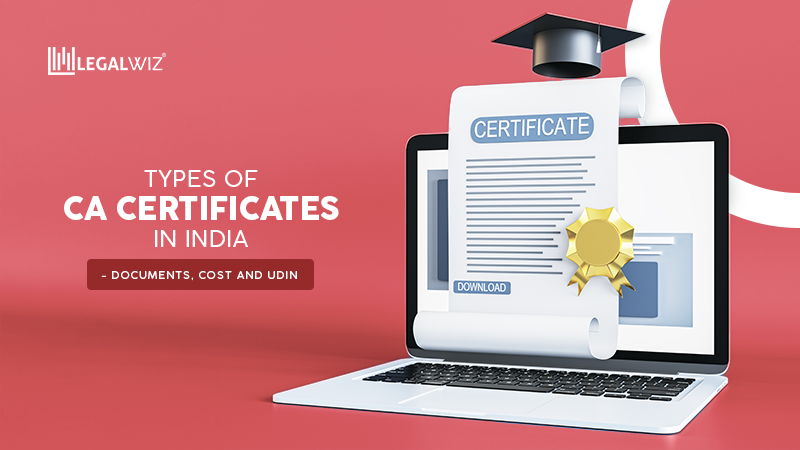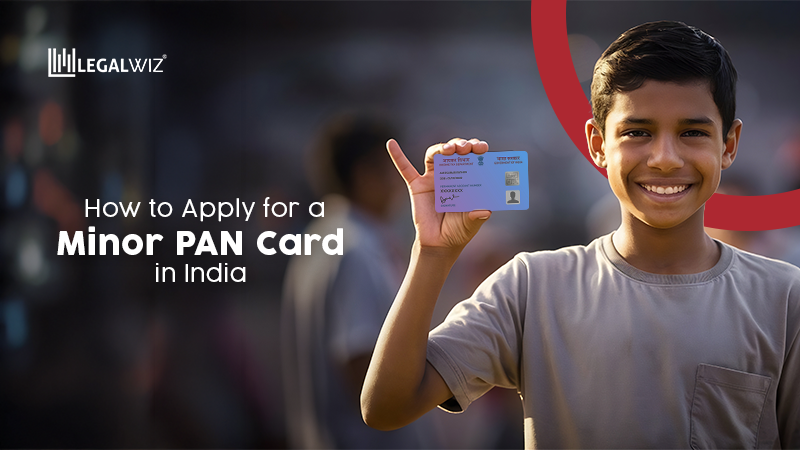Section 80D of Income Tax Act: Medical Insurance Deductions, Limits & Eligibility
Medical emergencies don’t wait for tax season, and they can cost a fortune. But what if the money you spend to protect your health could also protect your finances? That’s exactly what Section 80D of the Income Tax Act does—turning your health insurance into a tax-saving ally and making your ITR filing process lighter.
Under this section, you can claim deductions for:
- Medical insurance premiums are paid for yourself, your family, and even your parents.
- Preventive health check-ups, because spotting problems early is as valuable as fixing them.
- Medical expenses for senior citizens who don’t have insurance.
For AY 2025–26, the maximum deduction can go as high as ₹1,00,000 if you’re covering senior citizen parents. That’s a serious saving—one that can help you balance health, wealth, and compliance, all in one go.
| And if you’re looking to go beyond medical insurance and unlock every possible tax break, check out our complete guide to tax deductions from 80C to 80U for more smart strategies that cover investments, loans, and lesser-known deductions too. |
In this guide, we’ll decode:
- What Section 80D covers (and what it doesn’t)
- Deduction limits for different categories
- Who can claim and how
- Tips to maximise your savings
Ready to make your medical insurance work harder for you? Let’s dive in.
1. What is Section 80D?
Think of Section 80D as the Income Tax Act’s way of saying, “Stay healthy, save wealth!” It lets you reduce your taxable income by claiming deductions on money spent to secure your health and that of your loved ones. (New to tax rules? Check our ITR Filing Fundamentals for AY 2025–26 to see how deductions fit into your return.)
Deduction under section 80D allows taxpayers to claim deductions for:
- Medical insurance premiums – Protect your pocket while protecting your health.
- Preventive health check-ups – Early detection can save more than just medical costs.
- Medical expenses for senior citizens without insurance – Because age deserves extra care (and tax breaks).
Bonus: The deduction includes up to ₹5,000 for preventive health check-ups within the overall limit—a little nudge from the tax department to get that annual full-body check-up.
2. Deduction Limits Under Section 80D (AY 2025–26)
The government knows medical costs rise with age, so deduction limits are designed to give seniors a little extra relief. Here’s how much you can save under Section 80D:
| Category | Age of Insured Person(s) | Maximum Deduction (₹) |
| Self, Spouse & Dependent Children | Below 60 years | ₹25,000 |
| Self, Spouse & Dependent Children | 60 years & above (Senior Citizen) | ₹50,000 |
| Parents (Dependent or Independent) | Below 60 years | ₹25,000 |
| Parents (Dependent or Independent) | 60 years & above (Senior Citizen) | ₹50,000 |
| Preventive Health Check-Up | Within the overall limit | ₹5,000 |
| Total Deduction Possible | If both the self & parents are senior citizens | ₹1,00,000 |
Because saving taxes while staying healthy? That’s the ultimate power couple! (Curious about what’s changed this year? Read our New Income Tax Rules 2025–26 to stay updated on deduction limits and benefits.)
3. What Expenses Qualify Under Section 80D for ITR?
Section 80D isn’t just about paying for insurance—it’s about getting rewarded for staying healthy and being financially smart. Here’s what counts for deduction under Section 80D:
a) Medical Insurance Premiums – The Big One
- Premiums paid for self, spouse, dependent children, and parents are eligible.
- Covers individual plans, family floater, top-up, and super top-up policies.
- GST included – If you paid ₹20,000 + ₹3,600 GST, you can claim the full ₹23,600.
- Employer-paid group insurance? Nope, unless you chip in extra for a top-up.
Think of it as Netflix for your health, pay for coverage, enjoy peace of mind, and get tax savings as a bonus.
(Looking for more deduction options beyond medical insurance? Go through our Section 80C Deduction List for classic tax-saving tools.)
b) Preventive Health Check-Ups – Because Prevention Pays
- Claim up to ₹5,000 per year (within your total deduction limit).
- Includes blood tests, ECGs, X-rays, full-body scans, and other diagnostics.
- It can be claimed even in a year when you didn’t pay insurance premiums.
It’s like getting cashback for visiting the doctor before things go wrong.
c) Medical Expenses for Uninsured Senior Citizens
- If a senior citizen (60+) has no health insurance, you can claim actual medical expenses up to ₹50,000.
- Includes doctor consultations, hospital bills, medicines, and diagnostic tests.
Because when health insurance says “no,” Section 80D says “I got you.”
Final Tip: If it’s health-related and meets the rules, there’s a good chance Section 80D will give your tax bill a healthy cut too. Curious about other forms of tax savings, like on investments? Explore our ‘Capital Gains Tax explained’ guide to see how to manage and save on gains smartly.
4. Who Can Claim & For Whom Under Section 80D?
Section 80D isn’t a “claim for all” party—it has clear rules about who gets the invite. Here’s the guest list:
Who Can Claim?
- Individuals – Whether you’re salaried, self-employed, or a freelancer, you’re in.
- HUFs (Hindu Undivided Families) – Premiums paid for any member of the HUF are fair game.
Who’s Covered?
- Self – Because self-care is tax care.
- Spouse – Marriage has perks, including tax savings.
- Dependent Children – Only if they’re financially dependent. If they earn, they’re on their own.
- Parents – Dependent or not, both qualify.
| And if you’re a senior citizen, the tax department gives you extra perks—higher deductions and relaxed rules. Want the full scoop? Check out ITR filing for senior citizens AY 2025–26: Exemptions & how to file for a quick guide. |
Who’s Not Covered?
- Siblings, cousins, in-laws, or friends – Emotional bonds don’t impress the taxman. No deduction here.
Think of it as a VIP list where only immediate family gets access, while siblings, cousins, and friends wait outside the velvet rope. And since the right claim also depends on the right return form, don’t miss our ITR-1 to ITR-7 Form guide to know which one fits your tax journey.
5. Payment Rules You Must Follow for Claiming 80D Deduction
How you pay for your policy or check-ups can make or break your Section 80D claim. Here’s what you need to know:
1. Digital or Banking Channels Only
- Pay premiums through cheque, debit/credit card, UPI, net banking, or any traceable method.
- Cash payments (except for check-ups) = no deduction, no excuses.
2. Preventive Health Check-Up Exception
- Up to ₹5,000 spent on preventive check-ups can be paid in cash and still qualify.
- Applies even if you didn’t pay a premium that year.
3. Name & Proof Matter
- Ensure payments are made in the name of the taxpayer, spouse, dependent children, or parents.
- Keep receipts and payment proofs; the IT department loves documentation.
Think of it as a “no receipt, no reward” policy—because tax savings deserve a paper trail!
6. Exclusions & Mistakes That Cost You
While Section 80D of the Income Tax Act is generous, a few missteps can wipe out your savings. Avoid these traps:
- Employer-Paid Group Insurance – If your employer foots the entire bill, you can’t claim a deduction under Section 80D.
- Ignoring GST – Premium + GST = Total deductible amount. Don’t miss this extra benefit.
- Non-IRDAI-Approved Policies – Only policies from IRDAI-registered insurers qualify. Overseas or unregistered schemes are a no-go.
- Cash Payments – Except for preventive health check-ups (up to ₹5,000), cash payments get no deduction.
- Covering the Wrong People – Siblings, in-laws, or friends are not eligible, no matter how much you care.
Pro Tip: One wrong entry can cost you thousands—claim smartly, claim right.
7. Pro-Tips & Real-Life Examples to Maximise Section 80D Benefits
Section 80D is full of numbers and rules—but the real magic happens when you put them into practice. Here’s how to make the most of your deductions, along with relatable examples to see the strategy in action.
| Pro-Tip | Why It Works | Quirky Take |
| Split Policies for Parents & Self | Deduction limits are per insured block. Self/family under 60 → ₹25,000; parents over 60 → ₹50,000. | Don’t cram everyone into one basket—tax loves separate bags! |
| Use a Preventive Check-Up Annually | Up to ₹5,000 can be claimed within the overall limit. | Taxman says: “Check your cholesterol, not just your refund!” |
| Family Floater for Wider Coverage | Covers self, spouse, and kids under a single premium. Cheaper than individual policies. | One policy, many lives—like a Netflix subscription, but healthier! |
Real-Life Examples: How to Claim Section 80D
Scenario 1: Young Professional Covering Self & Parents
- Profile: 30-year-old software engineer, spouse, two dependent kids. Parents both 62.
- Strategy:
- Self + spouse + kids → ₹25,000 deduction
Parents → ₹50,000 deduction
- Total Deduction: ₹75,000
- Self + spouse + kids → ₹25,000 deduction
- Tip: Your parents may not cook your meals, but their medical bills can cook up serious tax savings!
Scenario 2: Senior Citizen Without Insurance
- Profile: 65-year-old retiree, living independently, no health insurance.
- Strategy: Can claim actual medical expenses up to ₹50,000.
- Tip: Even if insurance companies shy away, the taxman gives you a comforting hug with a deduction.
Scenario 3: Family with Floater Plan
- Profile: 40-year-old couple with two kids (all below 60). Family floater policy covers everyone.
- Strategy:
- Family floater premium = ₹27,500
- Deduction claimed = ₹25,000 (cap for <60 block)
- Use ₹5,000 preventive check-up allowance to optimize the claim (split among family)
- Total Deduction: ₹30,000
- Family floater premium = ₹27,500
- Tip: One plan, many lives, and still a healthy slice of tax deduction—like sharing pizza and getting an extra slice free!
Scenario 4: Combo Optimization
- Profile: 35-year-old, spouse, two kids, parents both 63, all insured separately.
- Strategy:
- Self + spouse + kids → ₹25,000
- Parents → ₹50,000
- Preventive check-ups → ₹5,000
- Total Deduction: ₹80,000
- Self + spouse + kids → ₹25,000
- Tip: Proper planning = your family’s health and tax savings doing a perfect synchronized dance.
Final Takeaway
Your health policy isn’t just a safety net—it’s a tax-saving tool while filing your ITR. Section 80D rewards you for being responsible about health while letting you save on your tax bill at the same time.
Pro tip: Don’t wait until the last moment. Plan your premiums, preventive check-ups, and policy splits early in the financial year to make the most of AY 2025–26 deductions. A little foresight now means bigger savings and stress-free filing later.
Need help maximising your deductions? Talk to LegalWiz.in experts and get personalised guidance for smarter tax planning.
Frequently Asked Questions
Can I claim if my employer pays the premium?
Nope! Only the portion you actually pay counts. Employer contributions are outside your claim, unless you voluntarily top up the premium.
Are siblings covered under Section 80D?
Unfortunately not. Only self, spouse, dependent children, and parents qualify. Love them, but tax won’t!
Can NRIs claim 80D?
Only if the policy is issued in India by an IRDAI-approved insurer. Premiums paid overseas aren’t eligible.
Is GST on the premium included in the deduction?
Yes! The GST portion is part of the deductible amount—every rupee counts.
What if I pay for multiple policies?
You can claim all, as long as the total deduction doesn’t exceed the applicable limit (₹25,000/₹50,000 for self/family/parents blocks, plus preventive check-up).

Sapna Mane
Sapna Mane is a skilled content writer at LegalWiz.in with years of cross-industry experience and a flair for turning legal, tax, and compliance chaos into clear, scroll-stopping content. She makes sense of India’s ever-changing rules—so you don’t have to Google everything twice.







